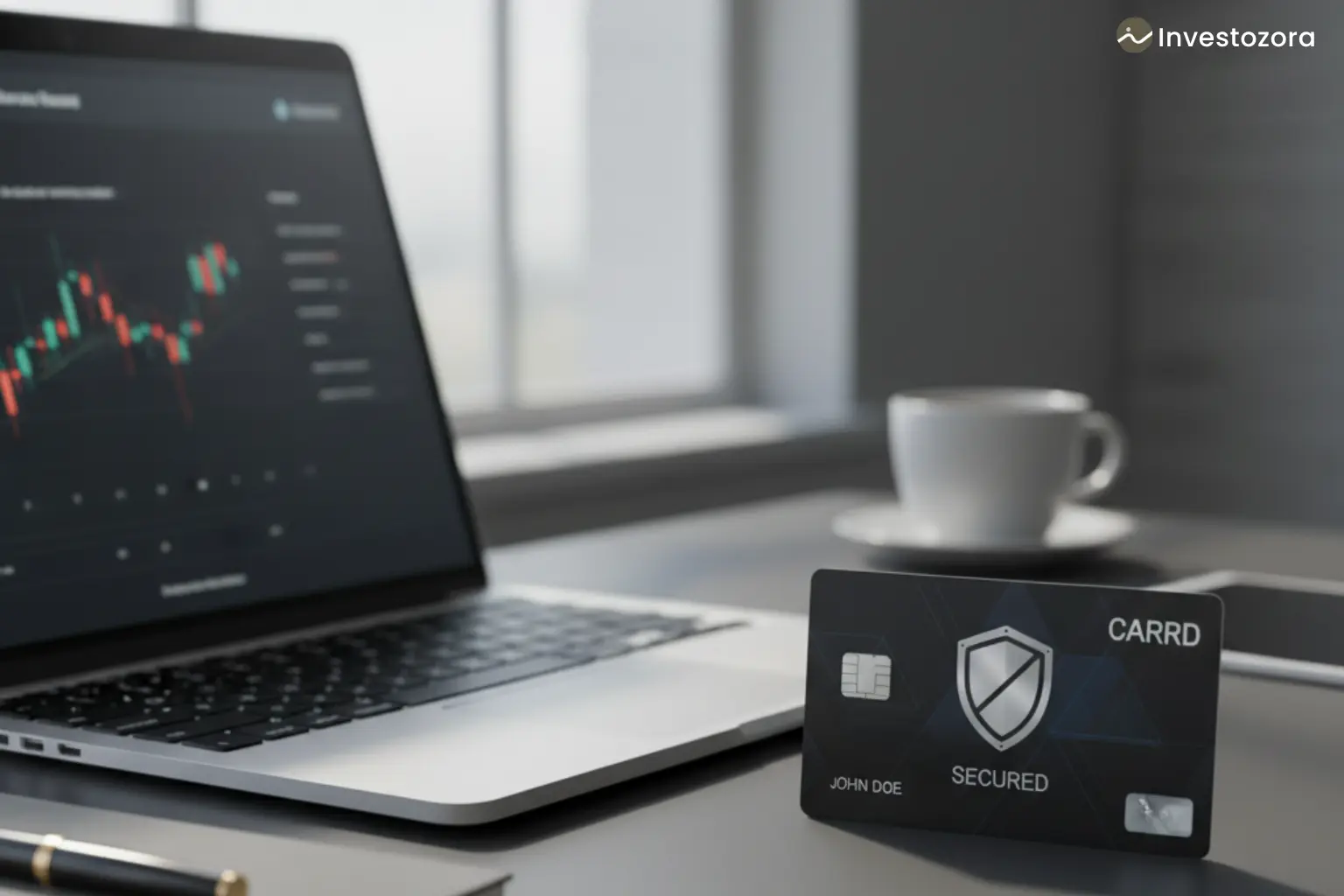When you first hear the term secured credit card, it sounds confusing. Why pay a deposit just to borrow money?
In 2025, these cards are one of the easiest ways to start building trust with banks. They give lenders a safety net while letting you show financial responsibility.
For beginners, secured cards act like training wheels before upgrading to regular credit cards. The habits you practice now will shape your credit future.
Used properly, they can lead to bigger milestones such as qualifying for personal loans or planning for long-term investing. That’s why many people see a secured card as the very first step toward lasting financial independence.
- A secured credit card requires a refundable cash deposit, usually $200–$500, which sets your spending limit.
- Payments are reported to Experian, Equifax, and TransUnion, directly helping you build or rebuild your credit score.
- These cards are ideal for students, immigrants, and people recovering from bad credit or bankruptcy.
- Top choices in 2025 include Discover it® Secured, Capital One Platinum Secured, and Citi Secured Mastercard with no annual fees.
- Responsible use for 12–18 months often leads to an upgrade into an unsecured card with higher limits and rewards.
What Is a Secured Credit Card
A secured credit card is a beginner-friendly card that requires a refundable deposit before you can use it. The deposit usually sets your credit limit, such as $300 down giving you $300 to spend.
Unlike prepaid cards, secured cards are real credit tools. They report to credit bureaus, helping you build or rebuild a history that affects loans, student credit cards, and even rental approvals.
Many people choose an SCC as their first step into the system. It’s often the gateway to stronger products like personal loans and eventually unsecured cards with rewards.
How Does a Secured Credit Card Work?
When you apply, the bank asks for a deposit usually between $200 and $500. That money becomes your spending limit and protects the lender.
You then use the card like any other, whether shopping online, paying bills, or covering expenses tied to bank accounts. It feels the same as a traditional credit card in everyday life.
Each payment is reported to Experian, Equifax, and TransUnion. These reports shape your credit profile, which lenders check before approving loans or even business checking accounts.
By paying on time and keeping balances low, you prove responsibility. This behavior steadily raises your credit score, opening doors to more advanced products.
After 12 to 18 months, most issuers review your account. With good history, you may qualify to upgrade into unsecured credit, much like moving from basic financial planning to long-term investing.
Who Should Use a Secured Credit Card?
Secured cards are perfect for students beginning their credit journey. They can start small, prove responsibility, and later move on to student credit cards with more perks like rewards or lower fees.
People with bad credit also benefit from secured cards. They serve as a safe path back after missed payments, defaults, or even bankruptcy, offering a second chance to prove financial reliability.
Immigrants and new residents often rely on secured cards to establish their very first U.S. credit file. That file then opens doors to bank accounts, rental agreements, and even better loan opportunities.
Even professionals rebuilding after debt find secured cards useful. They provide a structured way to demonstrate consistency and prepare for larger financial responsibilities. Think of them as stepping stones not a forever solution, but a bridge toward healthier credit and long-term financial freedom.
Secured cards are also great for anyone planning future milestones like personal loans or home ownership. They lay the groundwork today for approvals that matter tomorrow.
Best Secured Card Options in 2025
The market in 2025 offers better secured card choices than ever before. Discover it® Secured remains popular with cashback on dining and gas. Capital One Platinum Secured stands out because deposits can be as low as $49. That makes it accessible to many new users.
Citi Secured Mastercard offers a simple structure with clear upgrade reviews after 12 months. No annual fee is a big advantage here.
Each of these issuers reports to all three credit bureaus, which is essential for building credit. Without that, your effort doesn’t count. When comparing, treat it like evaluating financial planners or investment strategies the right fit depends on your personal goals.
Secured Credit Cards Compared 2025
| Card | Minimum Deposit | Key Benefits | Annual Fee | Upgrade Path |
|---|---|---|---|---|
| Discover it® Secured | $200 | Cashback on gas & dining, reports to all bureaus | $0 | Reviewed automatically for unsecured upgrade |
| Capital One Secured | $49–$200 | Flexible deposit, fraud monitoring | $0 | Possible upgrade after responsible use |
| Citi Secured Mastercard | $200 | Simple approval process | $0 | Review after 12 months for unsecured |
This table shows why no-annual-fee options are the most valuable. They keep costs low while you focus on building habits that prepare you for stronger products like retirement strategies.
Bottom Line
Secured credit cards in 2025 remain the fastest way to build or rebuild credit responsibly. They are not permanent but prepare you for stronger tools. Always pay on time and keep balances low. These two habits matter more than anything else for credit growth.
Plan to upgrade within 12–18 months. Most issuers will review your account and offer an unsecured path. With consistency, secured cards can unlock access to retirement strategies, larger loans, and even better insurance options.
In short, they are a bridge a simple but powerful way to move from beginner to confident borrower.
Methodology
We reviewed major secured credit cards available in 2025 by analyzing deposit requirements, annual fees, credit bureau reporting, and upgrade options. Data was collected from official issuer terms, regulatory resources, and trusted financial publications.
Our comparisons focused on features that matter most to U.S. consumers: affordability, accessibility, and long-term credit growth. Internal insights from bank accounts and student credit cards shaped our recommendations.
Frequently Asked Questions
-
The information on this site is for educational and general guidance only. It is not intended as financial, legal, or investment advice. Always consult a licensed professional for advice specific to your situation. We do not guarantee the accuracy, completeness, or suitability of any content.





